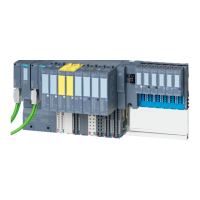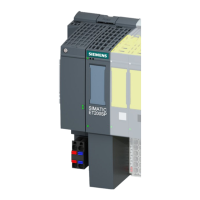Configuring
Application Module FM 458-1 DP - User Manual 4-31
A5E01078222-02 Edition 03.2009
4.5.5 Pointer interface
For pointer-based communications, a pointer is transferred to the
telegram data buffer between the blocks involved:
This pointer is actually a pointer which includes a structure, which in
addition to the pointer to the net data also has information for monitoring
purposes. This data includes, for example, the sampling time, block
class, byte/word swap. It has the connection comment "ZeigPuffer".
4.5.6 Configuring information and instructions
The telegram blocks as well as the read/write blocks must be
configured in the same sampling time in order to ensure consistency
(this is checked when initializing).
Offset data must be carefully entered.
a) For pointer-based communications, the configuring engineer must
precisely observe the offset (in bytes) of the 16-bit value (INT) or 32-
bit value (REAL, DINT) to be addressed.
b) The offset must always be smaller than the buffer size.
Before accessing buffer data, a check is made as to whether the area
(range) has been exceeded because of an offset which has been set
too high.
If data is transferred to a PROFIBUS-DP station or to a SIMATIC
CPU, then bytes (for INT) and, where relevant, words of the value to
be transferred (for REAL, DINT) must be swapped.
The read/write blocks have a "Swap" connection – SWP – for this
specific purpose.
In order to transfer telegrams via an interface, initially, it is sufficient to
just configure the telegram block with the appropriate lengths data
(CRV_T, CTV_P and S7RD_P, S7WR_P). Read/write blocks still don't
have to be configured. This means that the interface can be tested or
the computation time load through the interface configured using, for
example, few resources.

